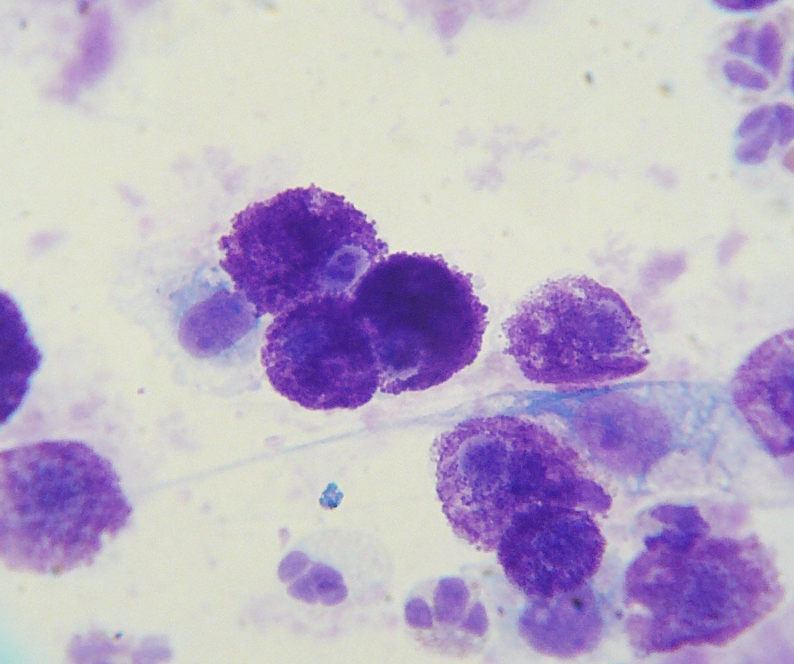Dogs and cats can develop lumps and bumps any time during their lives. Sometimes they are noticed by a groomer, a veterinarian during an exam, or by you when you are petting them. If you notice any new lump on your pet, it is important to have them examined by your veterinarian.

Your veterinarian will examine your entire pet and then evaluate the mass as best as they can. They take into account things like location, shape, size, duration and color, and these can help provide clues as to the type of mass it may be.
The next step is to examine the mass further using a fine needle aspirate. This is an easy and minimally invasive way to get more information about the mass. Cells are placed on a slide and stained so they can be examined under a microscope by a pathologist. Aspirates generally do not require anesthesia or sedation. Since some masses do not release their cells as well, however, a sedated biopsy may be required so your vet can obtain a better sample.

Many masses turn out to be benign, but even benign masses can cause sores or interfere with motion if they get too large. In these cases, surgical removal is often recommended so your pet becomes more comfortable. There are also masses that are malignant. These are much more concerning and require surgical removal or, in some cases, chemotherapy and radiation. Malignant tumors often grow fast and can occur in any pet, regardless of age or overall health, so it is best to get all lumps checked as soon as you find them.
Veterinary medicine has come a long way when it comes to dealing with masses. Both benign and malignant masses can be surgically removed. Both NorthPaws and WestPaws are capable of removing nearly all masses. If a mass is in a particularly difficult or delicate position, we have a surgical specialist who travels to our hospital for these special cases. For cancerous masses, a veterinary oncologist can help you determine whether surgery, chemotherapy, radiation, or a combination of these is best for your furry family member.

Sometimes your veterinarian will recommend that you monitor a mass at home. By keeping a log of the location, relative size, and appearance of any masses, and alerting your vet to any changes, you and your vet can keep tabs on any masses and more easily develop an appropriate treatment plan.
No comments:
Post a Comment